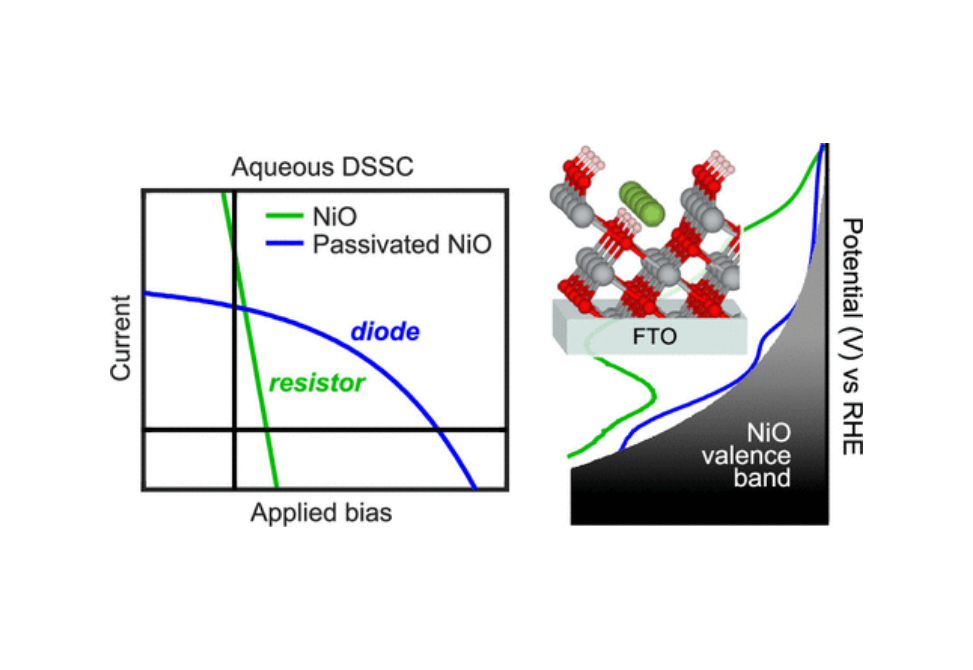Enabling Aqueous NiO Photocathodes by Passivating Surface Sites That Facilitate Proton-Coupled Charge Transfer
Abstract
Photoelectrodes consisting of wide-band gap metal oxides functionalized with chromophores and catalysts are a potential low-cost solution to generate solar fuels from aqueous solution. NiO is a common photocathode material used in these systems, yet it generally exhibits poor performance in aqueous conditions. Although the poor performance has been attributed to various surface species, the atomistic nature of these traps and role of water in dictating performance has not been resolved. Here, using first-principles calculations, we find that adsorption of water to a defective NiO(111) surface can result in intraband gap surface electronic states that are associated with hydroxyl and oxygen moieties adjacent to Ni vacancies. Electrochemical measurements on mesoporous NiO exhibit surface-localized faradaic events that give rise to a surface capacitance attributable to these states. Data collected in solutions of acetonitrile and water at various ratios, and in water after surface passivation by target atomic deposition (TAD) of Al, yield large shifts in the surface capacitance and in the open-circuit voltage, short-circuit current, and charge transfer resistance of dye-sensitized solar cell (DSSC) devices. Correlations between the measured surface capacitance and DSSC metrics in various solvent ratios and after TAD treatment suggest that surface states facilitate proton-coupled charge transfer with the iodide/triiodide (I–/I3–) electrolyte and are a primary driver of the dark recombination current in devices. TAD prevents this charge transfer, dramatically improving aqueous DSSC characteristics. This work provides a framework to better understand and tune NiO performance for applications that require aqueous solution.
Citation
Enabling Aqueous NiO Photocathodes by Passivating Surface Sites That Facilitate Proton-Coupled Charge Transfer
Aaron D. Taggart, Jake M. Evans, Lesheng Li, Katherine J. Lee, Jillian L. Dempsey, Yosuke Kanai, and James F. Cahoon
ACS Applied Energy Materials 2020 3 (11), 10702-10713
DOI: 10.1021/acsaem.0c01751


